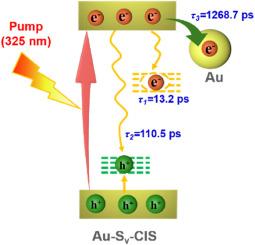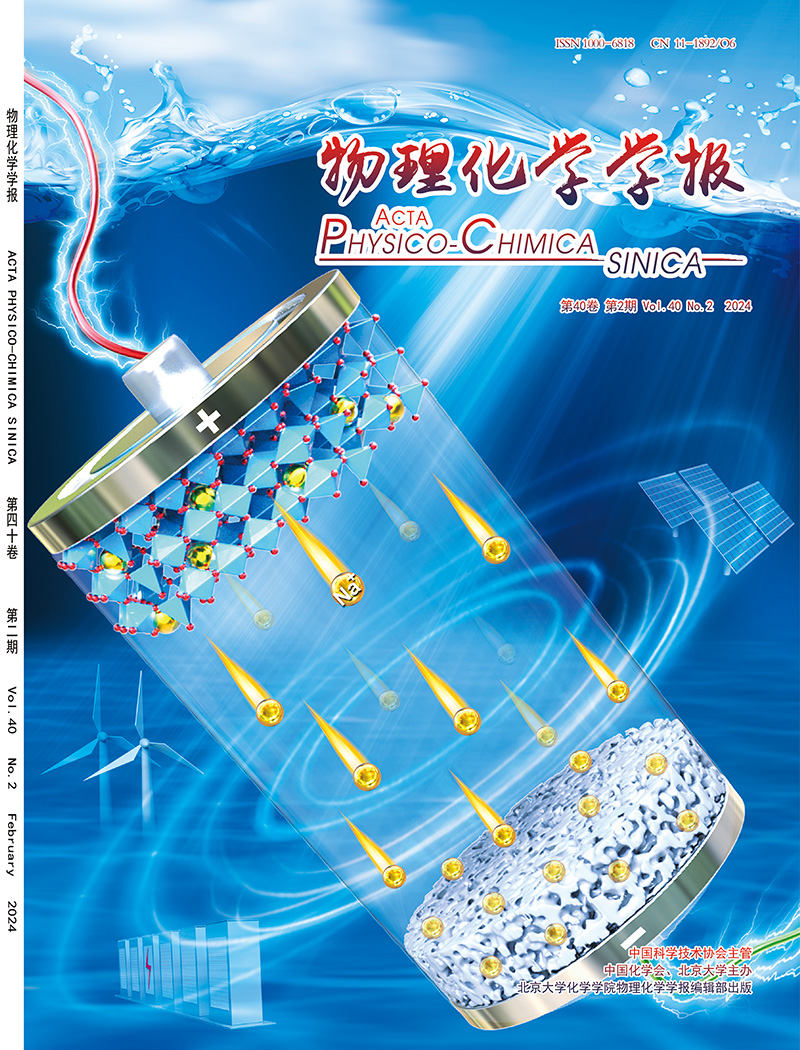Enhancing photocatalytic H2O2 production via dual optimization of charge separation and O2 adsorption in Au-decorated S-vacancy-rich CdIn2S4
IF 13.5
2区 化学
Q1 CHEMISTRY, PHYSICAL
引用次数: 0
Abstract
Photocatalytic oxygen reduction reaction (ORR) offers a mild and cost-effective approach for hydrogen peroxide (H2O2) production. However, its practical application is significantly hindered by rapid charge carrier recombination and insufficient O2 adsorption capacity in photocatalysts. To address these limitations, we developed a strategy involving the creation of S-vacancy-rich CdIn2S4 (Sv–CIS) to facilitate charge separation and subsequent deposition of Au nanoparticles on its surface (Au–Sv–CIS) to strengthen O2 adsorption. The results suggest that the optimized Au–Sv–CIS achieves a significantly increased H2O2 production yield of 2542 μmol−1 h g−1 in 10 %-ethanol/water solution, which is about 12.8 and 1.7 times higher than that of pure CIS and Sv–CIS. Comprehensive characterizations including photoluminescence spectra, time-resolved photoluminescence spectra, transient photocurrent response, electrochemical impedance spectra, and femtosecond transient absorption spectroscopy confirm the improved charge dynamics of Au–Sv–CIS. In addition, temperature-programmed desorption of O2 combined with density functional theory calculations conclusively demonstrates the superior O2 adsorption capacity of Au–Sv–CIS. This work provides a design strategy for efficient solar–to–chemical energy conversion through cooperative photocatalyst engineering.

在au修饰的富s空位CdIn2S4上通过双重优化电荷分离和O2吸附来增强光催化H2O2产率
光催化氧还原反应(ORR)为生产过氧化氢(H2O2)提供了一种温和而经济的方法。然而,由于光催化剂中载流子的快速重组和氧吸附能力不足,阻碍了其实际应用。为了解决这些限制,我们开发了一种策略,包括创造富含s空位的CdIn2S4 (Sv-CIS),以促进电荷分离和随后在其表面沉积Au纳米颗粒(Au - Sv-CIS),以加强O2吸附。结果表明,优化后的Au-Sv-CIS在10% -乙醇/水溶液中H2O2产率为2542 μmol−1 h g−1,比纯CIS和Sv-CIS分别提高了12.8和1.7倍。包括光致发光光谱、时间分辨光致发光光谱、瞬态光电流响应、电化学阻抗光谱和飞秒瞬态吸收光谱在内的综合表征证实了Au-Sv-CIS的电荷动力学改善。此外,程序升温解吸O2结合密度泛函理论计算,最终证明了Au-Sv-CIS具有优越的O2吸附能力。本研究提供了一种通过协同光催化剂工程实现高效太阳能-化学能转换的设计策略。
本文章由计算机程序翻译,如有差异,请以英文原文为准。
求助全文
约1分钟内获得全文
求助全文

 求助内容:
求助内容: 应助结果提醒方式:
应助结果提醒方式:


